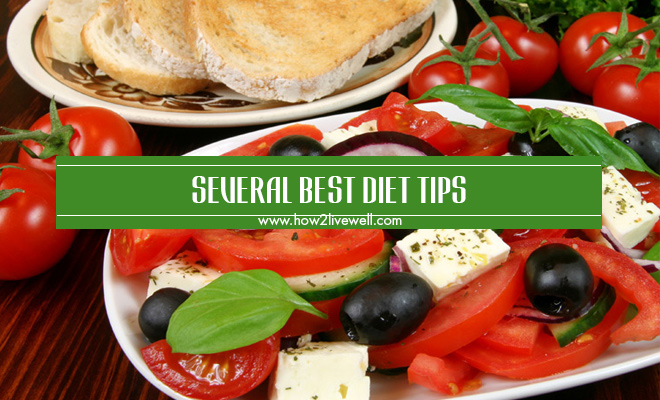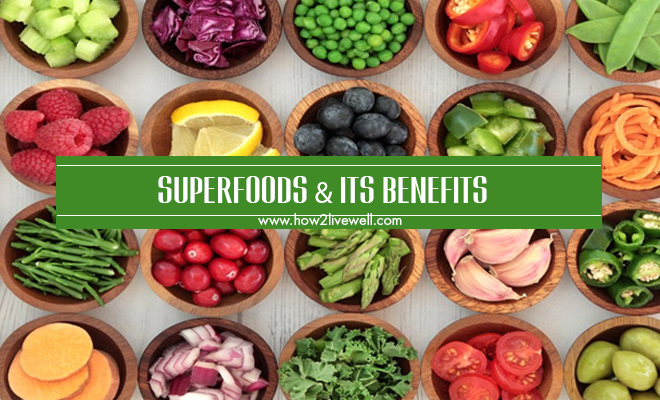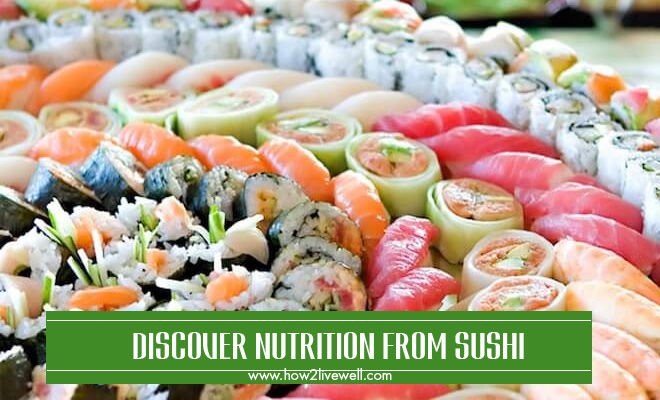Several Best Diet Tips

Hundreds of health gurus have come up with thousands of ways to try to get you to lose weight, motivate you to exercise more, and fool the body into shedding the pounds. But once you separate the good from the bad, and the bad from the downright dangerous, you’re left with a few golden nuggets that you can really put into place to start seeing results.
1. Lose the Scale (Or Use It Every Day):
There are two schools of thought when it comes to weighing yourself during your weight loss efforts. The first says to throw the scale out, and just focus on how you feel, and how you look in the mirror. The other says that you should weigh yourself daily so you can chart your numbers and watch your progress on a micro level.
You’ll have to decide which way you want to go, because having a scale around can actually be demotivating if you weigh yourself at intervals and find that you’re not losing as much as you wanted to. It’s a good idea to get a starting weight so you’ll know how far you’ve come later, but then put it in an inconvenient place until enough time has passed so you can see how you’re doing.
In Kyushu University in Japan they studied the effects of multiple weigh-ins per day for obese trial subjects. They then graphed the results on a spreadsheet and could see visually where they stood on any given day. If you want to replicate this system you don’t have to weigh yourself more than once per day, but make sure you weigh yourself at the same time each day to keep the data controlled.
2. Increase the Amount of Exercise You Get:
There are all sorts of fitness programs claiming that they have the way to get fit and lose weight. What they all have in common is that they’re getting it right to some degree. The important thing to take away from each of them is that you have to get the body moving more than it currently is. That means different things for different people.
If you currently lead a sedentary lifestyle, you don’t want to go zero to sixty overnight, or you’ll end up getting burned out. If you’re already pretty active you might want to consider amping things up and taking it to the next level if you’ve found that you’ve reached a plateau.
Another point to consider is that it doesn’t really matter what you do, or how much of it you do in any given day, but you’ll want to do it at least three times a week it’s strenuous, or every day if it’s walking or other light activities.
3. Stop Eating When You Feel Full:
This might sound like one of the easiest things to do, but it turns out it’s not that easy for most. Due to emotional attachments to food, and bad eating habits, we often keep eating long after getting the signal from the body to stop.
In his book I Can Make You Thin, Paul McKenna outlines what he says is an effortless way to eat and lose weight, getting down to your natural and healthy weight. He also recommends eating when you’re hungry, eating what you want, and enjoying every mouthful. Sounds easy enough, right?
It’s interesting to stop for a second and realize that although these sound like simple steps that we should be doing naturally. Since many of us eat when we’re not hungry, keep eating when we’re full, and distract ourselves during mealtime with TV or work, it really makes our dysfunctions easier to see. Recognizing them is the first step to working on a fix.
4. Keep Portion Sizes Under Control:
This is a big part of most diet plans, and goes against some of the large portions Americans have come to expect when they go out to eat. There have been various ways to describe how much food we should be eating. The palm of your hand is one way to portion out proteins and carbs, and the size of your fist works for baked potatoes and apples.
It seems like it would be easy enough to keep all-you-can-eat mentality confined to trips to Vegas, but more and more places these days are making it possible to stuff yourself. Endless shrimp offers, pizza buffets, and even unlimited refills on french fries are all readily available for most city dwellers. These are best avoided since the temptation to eat your money’s worth is often too strong.
Also keep in mind that the amount of food that the stomach can hold is roughly the size of two cupped hands. Try not to exceed that amount at any one sitting, and if you do near that size, try to do so at lunch when your digestive juices are at their strongest.
5. Don’t Buy the Bad Stuff:
The point of purchase is the moment of truth. Most of the time you’ll end up eating things you buy, even if you regret buying them. They say don’t shop hungry, and that may have been enough back in the day. But now they’re put so much psychology into product packaging and positioning, as well as TV ads, even if you’re not hungry you might find yourself filling your basket with things you know aren’t good for you.
Once a piece of junk food has made it into your home, it will call to you to eat it until you do. And since most of these foods contain chemicals in them to make you overindulge and crave it even more, they can really throw a wrench in your weight loss gears. Remove the temptation by removing the opportunity to cheat and eat foods that you regret by not buying them in the first place.
Another step you should take is getting tempting items out of the house. A lot of times a well-meaning health expert will say just to clear out that food and replace it with healthy food. But if you don’t like wasting food this might be hard for you. You could take a free day and eat all of the food that you shouldn’t be eating, and then start your new diet and exercise program the next day.
6. Help Your Weight Loss Efforts with Rehydration Therapy:
Drinking more water can be a great help to your weight loss efforts. It helps you eat less because you won’t be mistaking thirst for hunger (the body sends the same signal for both), and it helps all of your organs function better, especially the liver and kidneys. If you’re eating more fiber you’ll want to make sure that you’re drinking more water as well.
If you’ve been lax on drinking water for a long period of time, you don’t want to be to overzealous with your newfound water intake. It’s possible to start drinking too much water and overloading your kidneys that have learned to go without. Start by adding one more glass of water per day than you normally do. When you notice that your body has adjusted, i.e. when you’re processing the water that you drink, i.e. you’re peeing out what you’re drinking in, you can add another glass until you get to the recommended daily intake levels.
If you’re going to start working out in addition to dieting you should make sure to stay hydrated before, during, and after your workouts. The water you drink during this time should not be counted toward your daily water needs.
7. Get Slimmer with Better Sleep:
If you’re the kind to burn the candle at both ends, you could be contributing to weight gain and poor health in general. Any time you jump off of the natural circadian rhythm you run the risk of not functioning at your optimal best. The body’s natural process of rest and rejuvenation is vitally important. Sleep is when the body cleanses and purifies itself, and it can’t do this if you’re up studying, working, or watching TV.
When your body is functioning at its best you’ll have more energy for exercising, a clearer head to fight food cravings, and a more positive attitude which is essential to any diet plan. When you’re looking at losing weight there’s more to consider than just taking in fewer calories, and burning off more calories. It’s harder to make the connection between sleep and weight loss.
Better sleep tips: Most of us need 8 hours, but all 8 hours blocks are not created equally. Sleeping from midnight to 8am is not as beneficial as sleeping from 10pm to 6am. Going to bed and waking up earlier is a sound piece of health advice and can help you lose weight without changing anything else in your lifestyle.
8. Increase Alkaline Food Intake for a Healthy pH Level:
We don’t really have room here to get into the details, but your body functions best when it’s at a good pH level. Many superfoods are also alkaline foods and can raise your pH levels when eaten as part of a comprehensive plan for better health.
Here are some benefits to a higher pH level: In addition to helping with to get rid of fat in the body, you’ll also help prevent cancer, arthritis, and other chronic diseases. The good news is that most diet plans out there will automatically have you eating foods that are less acidic and more alkaline.
Here are some foods that can help you along the way: broccoli, pumpkin, almonds, strawberries, and apples. Here are some examples of foods that have an acidic effect on the body: corn, noodles, ice cream, cheese, meat, sugar, alcohol, and pharmaceutical drugs. Remember, you don’t have to cut out acidic foods completely, but try to hit an 80/20 ratio.
9. Cleanse the Body’s Vital Organs and Systems:
When you’re starting out on a new healthy eating regimen it’s good to start with a clean slate. There are several cleanses you can do depending on what you feel your body needs. These include a colon cleanse, liver cleanse. kidney cleanse, heavy metal cleanse, and parasite cleanse.
For a colon cleanse the best way to go is with colon hydrotherapy. Rather than your colon becoming dependent on a laxative or stimulant, this will help make it stronger and retrain it to do its job better. The liver is one of the most important organs in the body, and can make everything else function better. If you have excess toxins in the liver, which many people do, it can make your other weight loss efforts less effective.
While there is a lot of debate as to whether cleansing the different organs of the body works or not, you can try one for yourself and see how you feel before and after. It’s the best way to get a first-hand experience on it so you can make up your own mind and do what feels best to you.
10. Increase Good Fats and Decrease Bad Fats:
This is one tip that still has a lot of people confused. You have to eat fat to lose fat? It doesn’t seem to make sense, and the explanations out there can be pretty exhausting. Turns out all fats are not created equally, so cutting all of them out of your diet is not a good idea. Learning to separate the good from the bad is important to maintaining a healthy lifestyle and feeling fuller longer.
You might have heard of the infamous trans fats that have been the subject of public witch hunts, but that’s just the uber-bad fat that you should never eat. There are also a whole family of fats that you should work to eliminate from your diet, and a host of good fats that you should make an effort to add to your daily food intake.
Here are some good fats to get on board with: olive oil, peanut butter, avocados, walnuts, and safflower oil. And here are some bad fats to kick to the curb: margarine, butter, cheese, fried foods, and packaged foods.
11. Take 10,000 Steps Daily:
This was the subject of a book called The Step Diet, which advocated not only the extra walking, but also cutting back on how much you eat. Even if you kept everything else in your life the same, you’d still benefit by increasing your way up to the 10,000 daily step quota.
The first thing you’ll need to do is grab yourself a pedometer. Reliable pedometers can be had for less than $20 and you simply clip it to your waist and do your best to forget about it. When you’re ready to turn in for the night make a record of your daily steps. You can graph this out over time to see your progress.
What you’ll likely find is that you get more active and move about more throughout your day you’ll naturally make better food choices, have more energy – not less, and have a better outlook on your life and the world at large.









